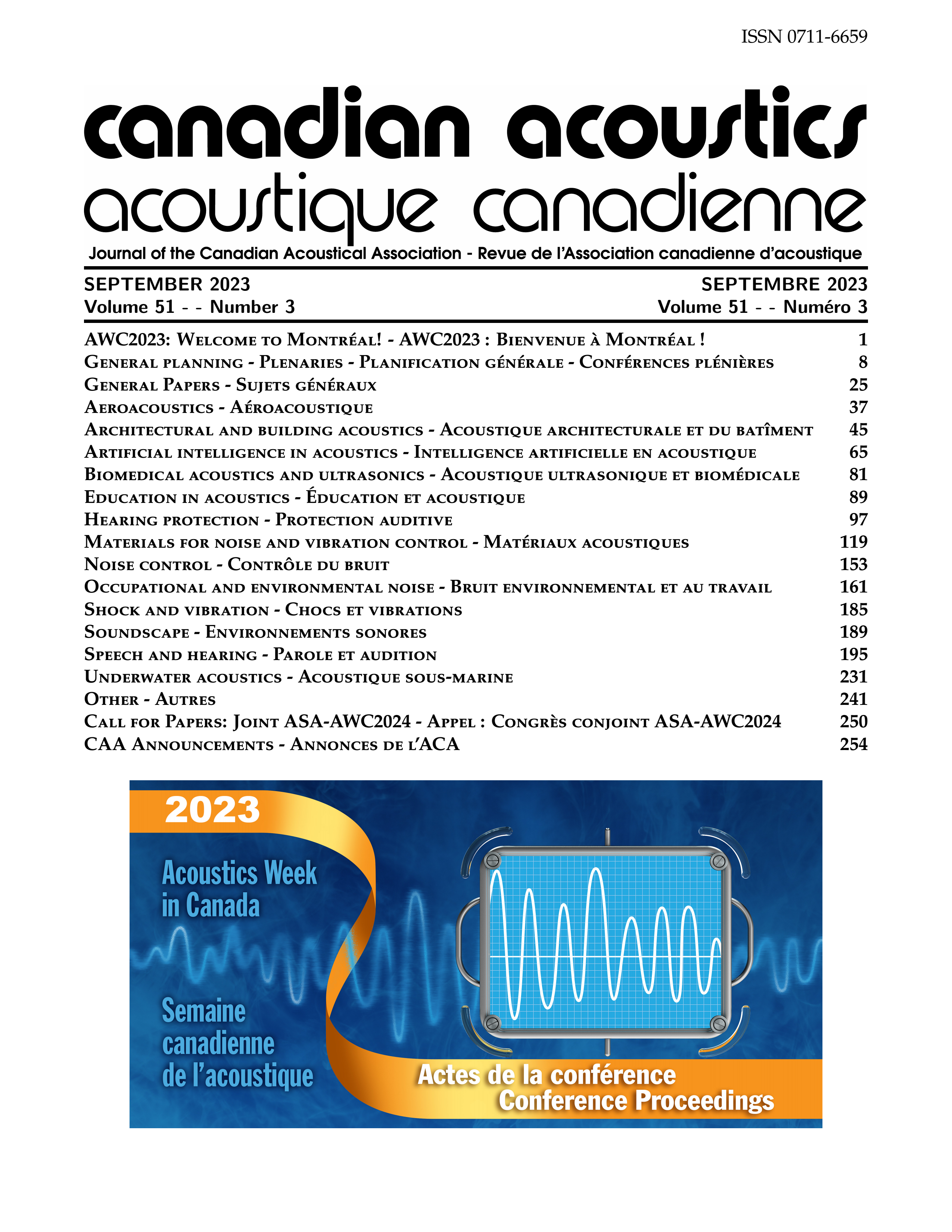A New Empirical Model Derivation for the Estimation of Turbulent Boundary Layer Power Spectral Density Aircraft Using Machine Learning Regression
Abstract
ENGLISHThis paper explores the possibility of using a novel machine learning technique, a nonlinear least squares (NLS) regression algorithm, to produce an original turbulent boundary layer (TBL) wall pressure fluctuations model. An iterative technique was developed in the statistical programming language R that fit the coefficients and exponents of numerous candidate models via NLS techniques. This allowed for 186 unique model forms to be generated. The optimum model was accurate near the conditions of the training data (which had an average airspeed of 10.54 m/s and an average Reynolds number of 849,803), at lower airspeeds, and at both lower and higher Reynolds numbers. Due to limited outside data, conclusions regarding the model performance at higher airspeeds were more limited. Overall, it is concluded that machine learning techniques show strong promise in the search for an accurate, universally applicable TBL noise model.FRANÇAISCet article explore la possibilité d'utiliser une nouvelle technique d'apprentissage automatique, un algorithme de régression des moindres carrés non linéaires pour produire un modèle original de fluctuations de pression de la paroi de la couche limite turbulente (CLT). Une technique itérative a été développée dans le langage de programmation statistique R qui ajuste les coefficients et les exposants de nombreux modèles candidats via des techniques des moindres carrés. Cela a permis de générer 186 formulaires modèles uniques. Le modèle optimal était précis près des conditions des données d'entraînement (qui avaient une vitesse moyenne de 10,54 m / s et un nombre de Reynolds moyen de 849 803), à des vitesses plus faibles et à des nombres de Reynolds inférieurs et supérieurs. En raison de données extérieures limitées, les conclusions concernant les performances du modèle à des vitesses plus élevées étaient plus limitées. Dans l'ensemble, il est conclu que les techniques d'apprentissage automatique sont très prometteuses dans la recherche d'un modèle de bruit CLT précis et universellement applicable.Additional Files
Published
How to Cite
Issue
Section
License
Author Licensing Addendum
This Licensing Addendum ("Addendum") is entered into between the undersigned Author(s) and Canadian Acoustics journal published by the Canadian Acoustical Association (hereinafter referred to as the "Publisher"). The Author(s) and the Publisher agree as follows:
-
Retained Rights: The Author(s) retain(s) the following rights:
- The right to reproduce, distribute, and publicly display the Work on the Author's personal website or the website of the Author's institution.
- The right to use the Work in the Author's teaching activities and presentations.
- The right to include the Work in a compilation for the Author's personal use, not for sale.
-
Grant of License: The Author(s) grant(s) to the Publisher a worldwide exclusive license to publish, reproduce, distribute, and display the Work in Canadian Acoustics and any other formats and media deemed appropriate by the Publisher.
-
Attribution: The Publisher agrees to include proper attribution to the Author(s) in all publications and reproductions of the Work.
-
No Conflict: This Addendum is intended to be in harmony with, and not in conflict with, the terms and conditions of the original agreement entered into between the Author(s) and the Publisher.
-
Copyright Clause: Copyright on articles is held by the Author(s). The corresponding Author has the right to grant on behalf of all Authors and does grant on behalf of all Authors, a worldwide exclusive license to the Publisher and its licensees in perpetuity, in all forms, formats, and media (whether known now or created in the future), including but not limited to the rights to publish, reproduce, distribute, display, store, translate, create adaptations, reprints, include within collections, and create summaries, extracts, and/or abstracts of the Contribution.


